Most bikes have a range of gears to enable you to crest a climb, carve down a descent and everything in between.
In theory, all of the gears are at your disposal but on some systems, it’s best to avoid using certain gear combinations. This is typically referred to as ‘cross-chaining’.
Cross-chaining is a complicated and controversial subject. In this guide, we’ll take you through exactly what cross-chaining is, why you shouldn’t cross-chain and how to avoid cross-chaining in the first place.
We asked Shimano and SRAM for their opinions and some of the responses may surprise you.
- What is cross-chaining?
- Cross-chaining examples
- Why is cross-chaining bad?
- How to avoid cross-chaining
- Should you ever cross-chain?
What is cross-chaining?
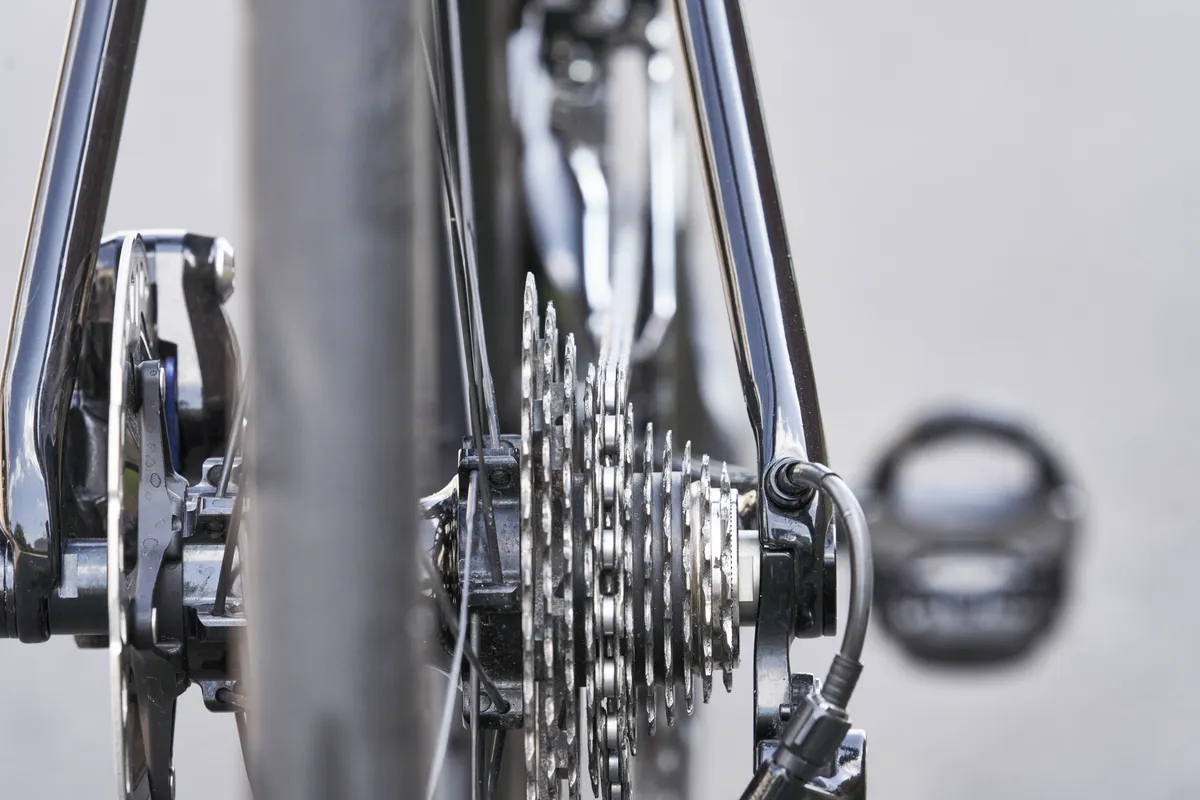
Cross-chaining is the act of riding in the smallest or largest cassette sprocket (the gears at the back of the bike) and the corresponding chainring (the gears at the front of the bike) at the same time.
For example, on bikes with a double chainring setup, this is the smallest cassette sprocket and the smallest chainring, or the largest cassette sprocket and the largest chainring.
If you're riding in either of these combinations, you're cross-chaining.
The chain performs optimally when it is in a straight line. Cross-chaining forces your chain into an extreme angle, reducing efficiency, increasing wear and harming shifting performance.
What is a ‘chainline’?
In the strictest sense of the word, chainline is a measurement taken from the centre of your rear hub to the middle of the freehub.
For the crankset, it is a measurement taken from the centre of the bottom bracket shell to the space between the chainrings on a 2x setup, or where the chainring sits on a 1x setup.
As mentioned, the chain performs best when running in a straight line. Some refer to this as an ‘optimum’ or ‘efficient’ chainline.
Okay, show me an example of cross-chaining…
Cross-chaining on a 2x drivetrain
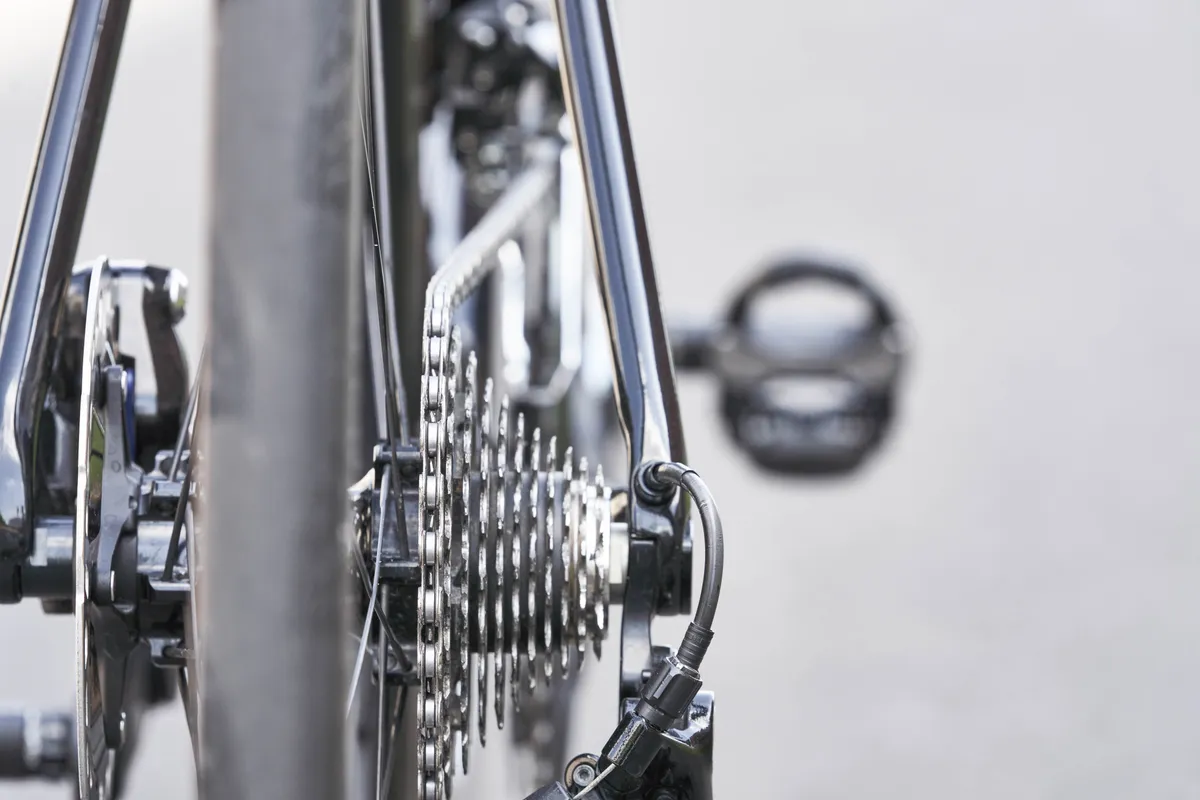
On a 2x drivetrain, cross-chaining typically refers to when you are riding in the smallest chainring and cassette sprocket, or in the biggest chainring and cassette sprocket.
It’s also generally recommended to avoid riding in the second smallest sprocket when in the small chainring.
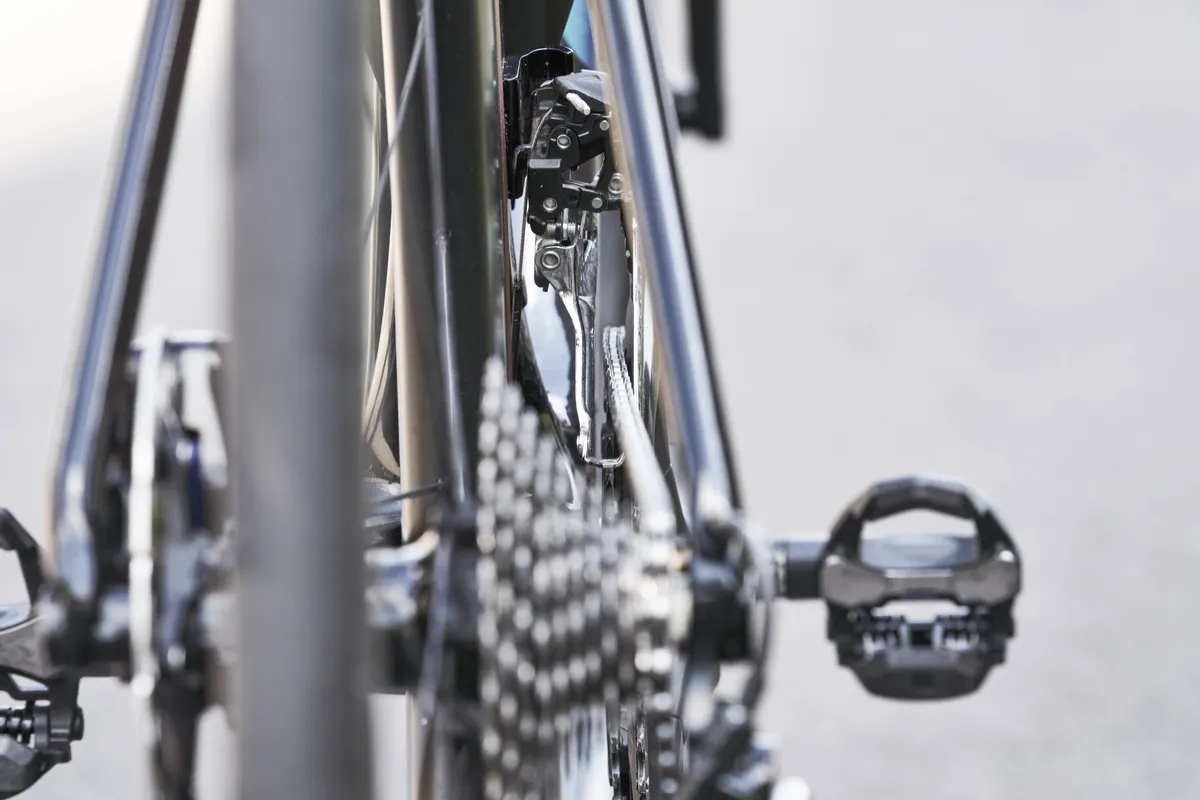
SRAM says “with 2x, big-big is fine”, but it specifically discourages riding in a small-small combination because “the chain tension is low, which may result in chain drop, and there’s a small risk of inadvertent chain pick-up by the large ring”.
Shimano’s response is more coy – the brand says its rear derailleurs are designed to sit at a certain position, depending on how many chainrings they are paired with, although the brand acknowledges there is more friction when cross-chaining.
Cross-chaining on a 1x drivetrain
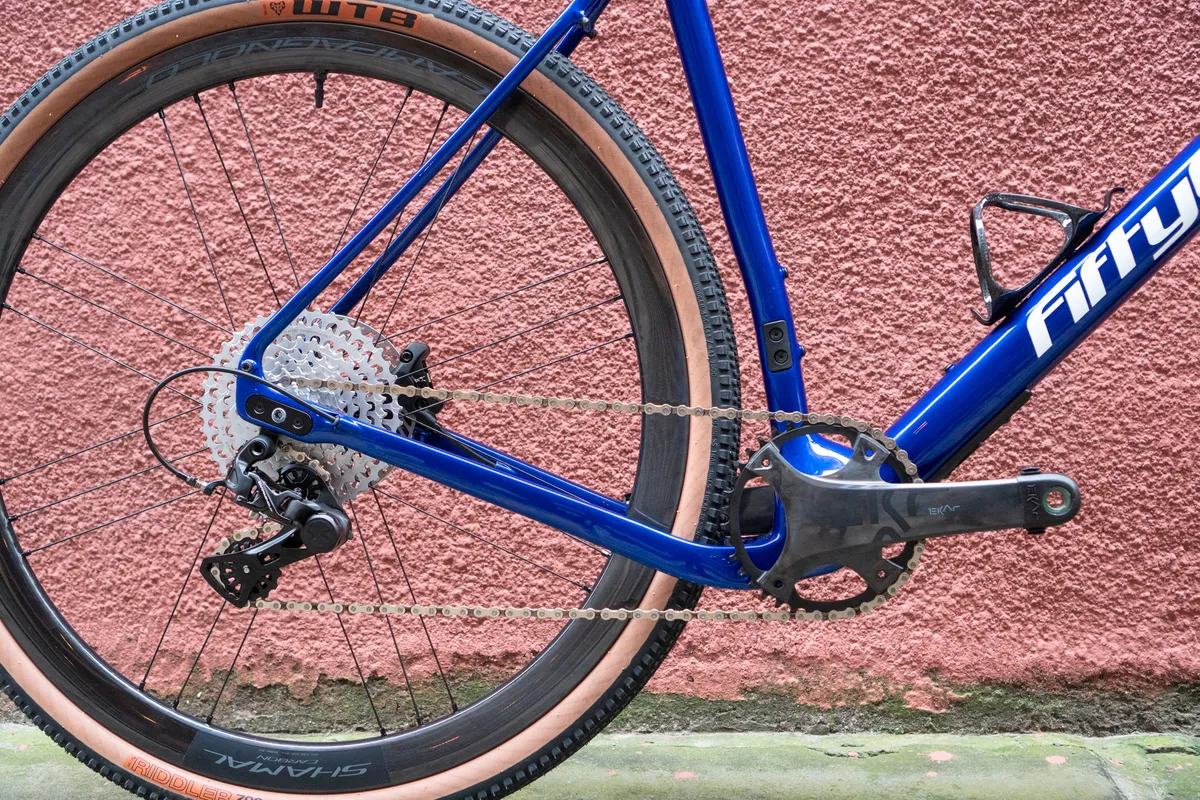
Whether cross-chaining is something to worry about on 1x drivetrains (a drivetrain with a single chainring) is a little murkier, given there aren’t multiple chainrings and the two opposing ends of the cassette represent your easiest and hardest gears.
SRAM’s take is simple: “There’s literally no such thing as cross-chaining with a 1x system”, with the brand advising riders to “ride the gear that feels best”.
Like SRAM, Shimano says riders shouldn’t be concerned with cross-chaining on the brand’s 1x drivetrains.
However, an optimum chainline for drivetrain efficiency still exists for 1x drivetrains.
Using the cogs towards the middle of the cassette, which results in a straighter chainline, is more efficient and quieter.
Hold on, I'm confused...
Confused by some of the terminology here? We've got a full glossary covering all bike components – and you can check out the guides below for more on each of the main components covered in this article:
Why is cross-chaining bad?
When you cross-chain, the chain is made to run at a more extreme angle because it runs diagonally, potentially increasing friction and strain on the drivetrain components.
Drivetrain wear
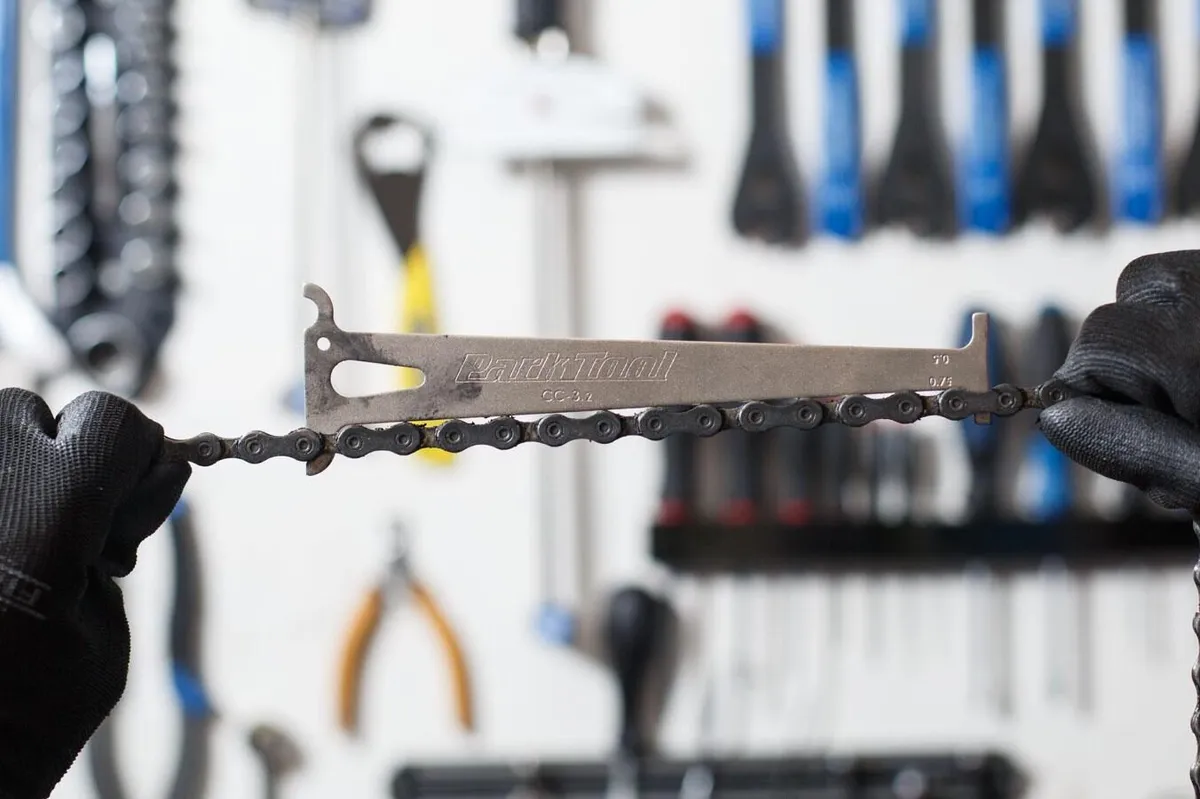
The additional friction generated by cross-chaining is often thought to lead to increased wear. Because the chain is put under more tension, it’s likely to wear faster, meaning you’ll need to replace the chain more often.
That’s the common thinking, anyway – but SRAM disagrees. SRAM says “cross-chaining has no effect on chain wear. The effect of cross-chaining on the big cog and big ring is insignificant”.
The brand recommends simply picking the gear ratio that feels best to ride, with the exception of the small-small on a 2x system.
Longer chain length
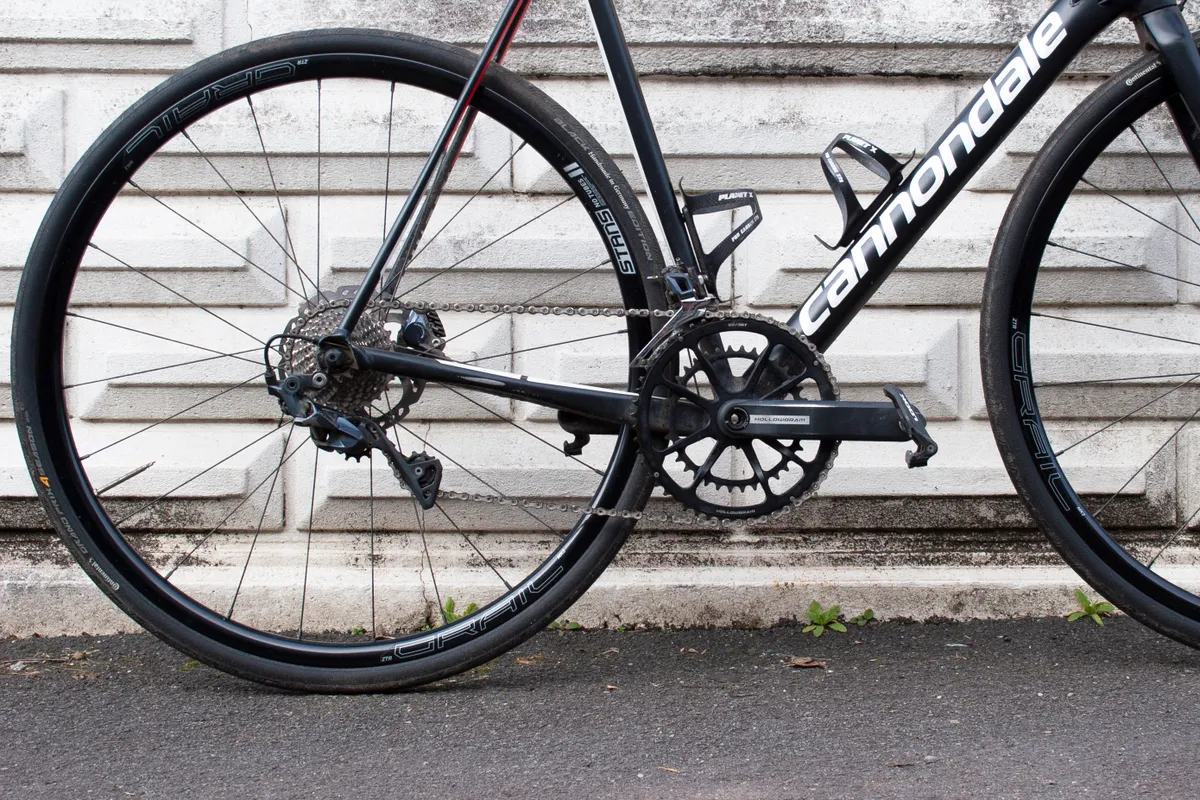
When you ride in the big-big combination, the chain is at its longest possible length.
If the chain is too short, the rear derailleur is put under more strain in this gear, especially if the chain is slightly too short.
If the chain has been cut too long, when you ride in the small-small combination, the chain will droop onto the driveside chainstay. This will be noisy and you may drop the chain (it comes off the chainring) when riding on rough terrain.
Noise
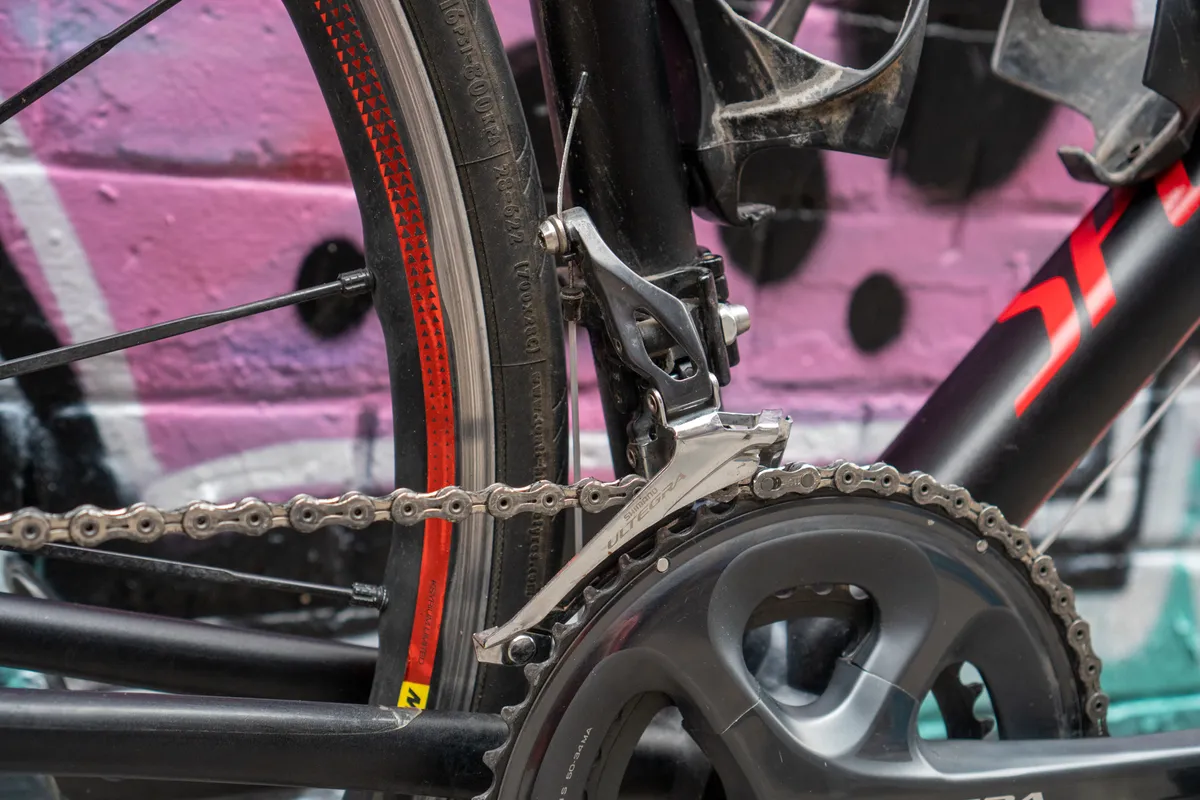
Cross-chaining will almost certainly be noisy because the chain is put under more strain.
You may also hear the noise of the chain rubbing on the inner cage plate of the front derailleur.
A bike with a poor chainline (where the chainrings or cassette sit too far inboard or outboard relative to the other) may also be noisier.
The chain may also hit the chainstay if you ride in the small-small combination because the chain is under the least amount of tension.
On some drivetrains, manufacturers build a trim function into the front shifter. This moves the front derailleur slightly inboard or outboard to prevent the chain from rubbing when cross-chaining.
Power loss
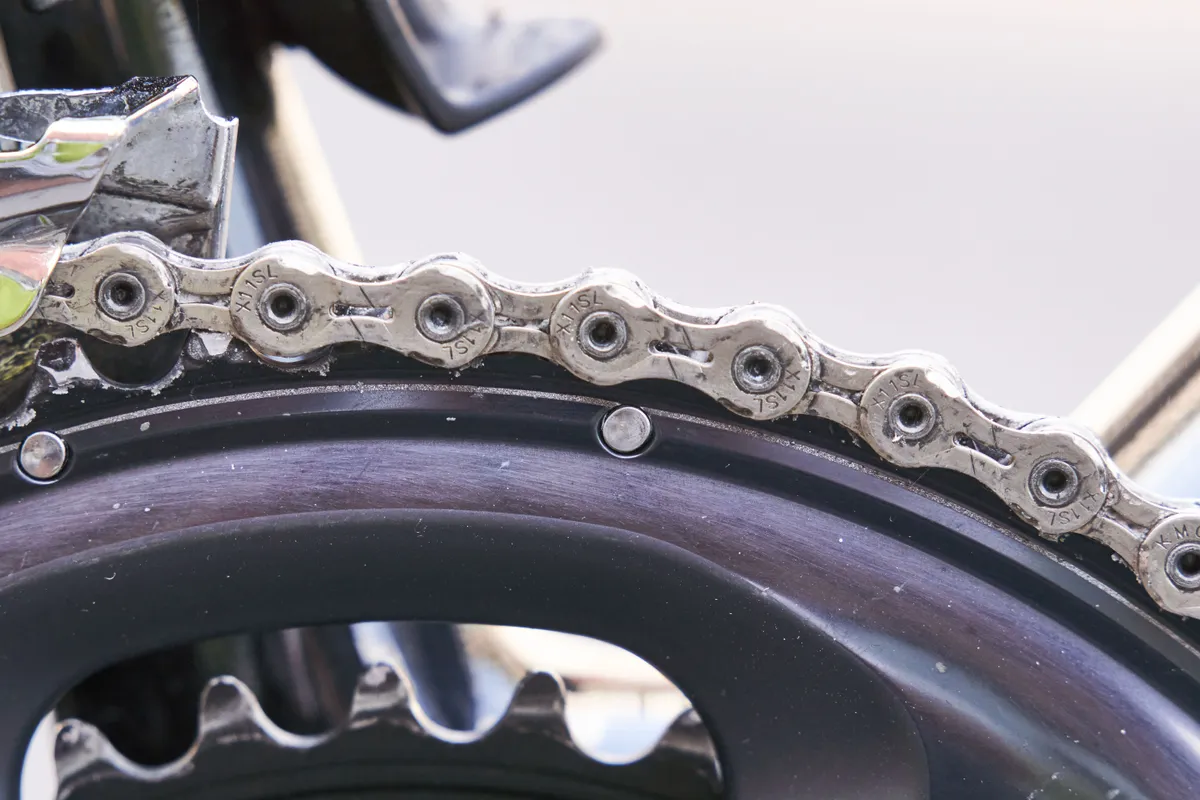
It is generally thought to be more efficient not to cross-chain, given the increased friction of the chain rubbing against the front derailleur or cassette teeth and the sub-optimal chainline.
An efficiency test conducted by Velonews between 1x and 2x drivetrains found a ~5 watt difference riding in the 39-11 compared to the near-equivalent 53-15 gear.
How to avoid cross-chaining
On a multi-chainring setup (2x or 3x), if you notice you are about to cross-chain, you should consider changing chainring.
For example, if you're riding on the big chainring and the second largest sprocket, swap to the easier chainring and change down a gear. You’re effectively achieving an equivalent gear ratio with a better chainline.
Do electronic groupsets prevent cross-chaining?
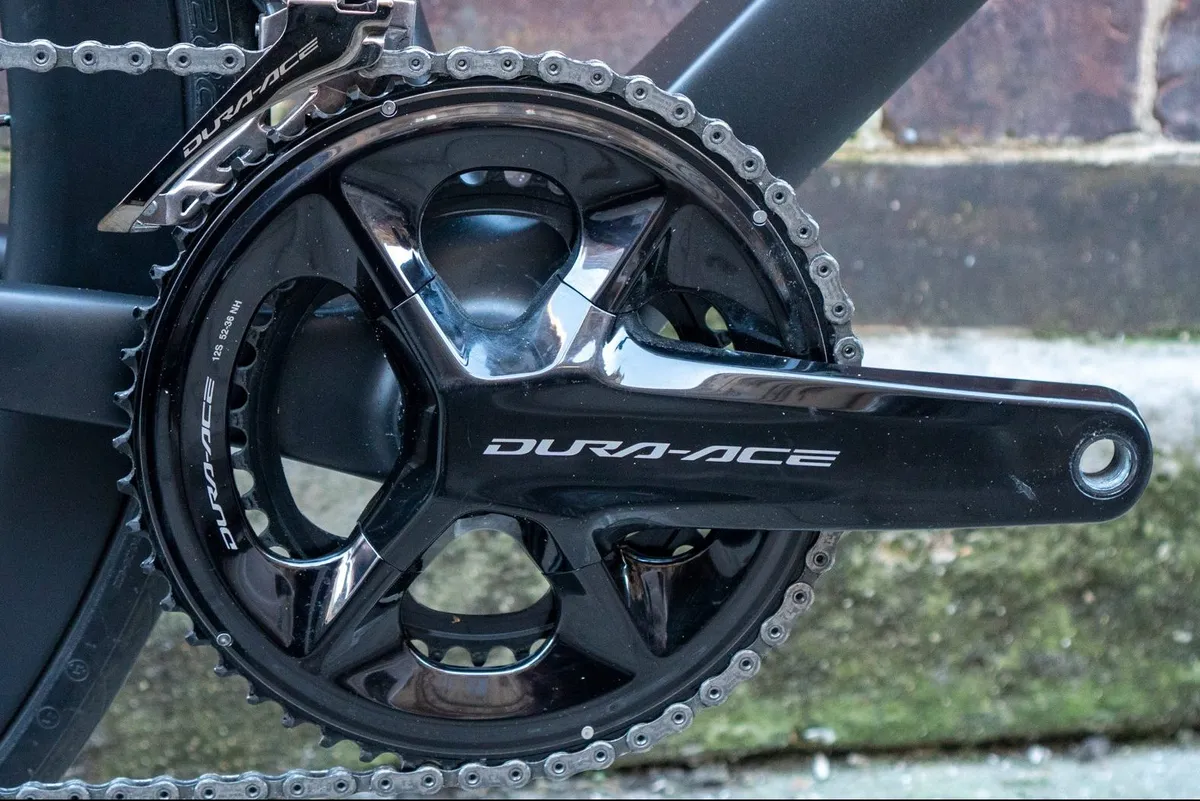
Some electronic groupsets have features to prevent you from cross-chaining.
On Shimano’s 11- and 12-speed Di2 road bike groupsets, the brand prevents you from riding on the two smallest sprockets when using the inner chainring.
Shimano also offers Synchro Shift. This feature shifts the front and rear derailleur automatically as you select a harder or easier gear, maintaining an optimal chainline and offering the smoothest possible steps through gears.
On SRAM’s AXS groupsets, the brand prevents the system from shifting into the small-small combination on a 2x setup.
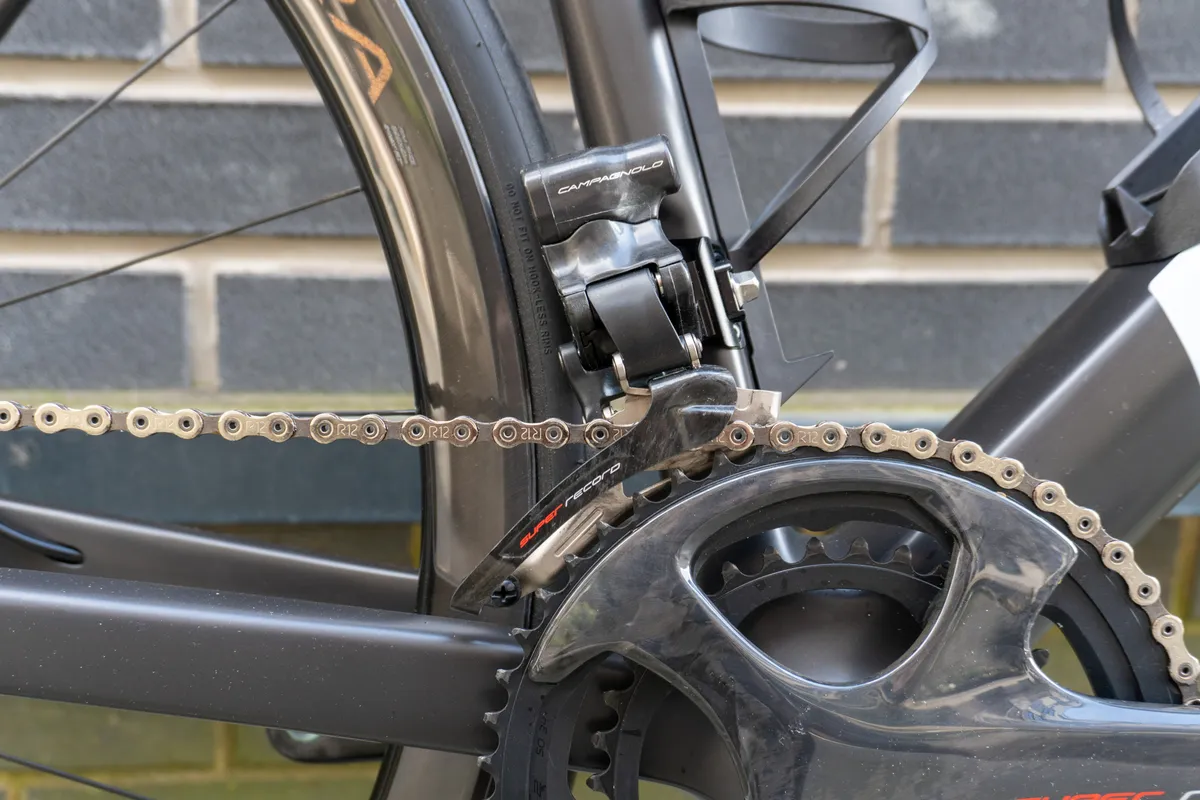
Campagnolo bucks the trend with its Super Record EPS 12-speed groupset, because you are allowed to cross-chain. However, if you happen to be riding in the small-small, the front derailleur automatically self-adjusts to prevent the chain rubbing on the outer cage plate.
SRAM and Shimano’s electronic front derailleurs also have an ‘auto-trim’ function.
Should you ever cross-chain?
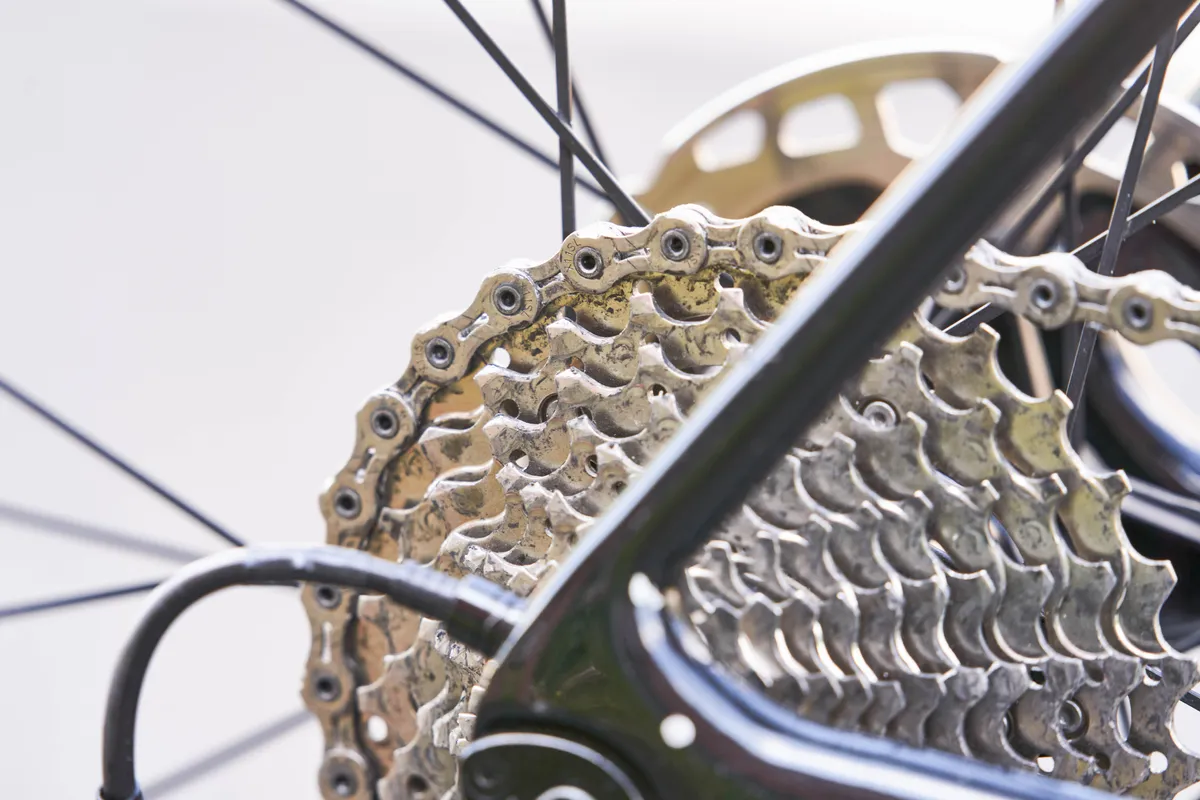
Ideally, you should avoid cross-chaining.
However, this can be hard to remember when you’re riding at the limit, so don’t worry if you find yourself accidentally cross-chaining from time to time.
In a race scenario, if you’re heading up an incline that isn’t steep enough to warrant changing into the inner chainring, it arguably requires less effort to cross-chain than to concentrate on shifting the front derailleur.
If you're just getting to grips with how to change gear on a bike, cross-chaining is something to keep in mind as you familiarise yourself with the various components. With time, you'll find yourself changing gears – and avoiding cross-chaining – without even thinking about it.
